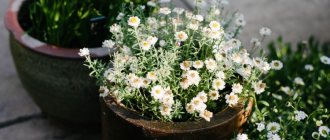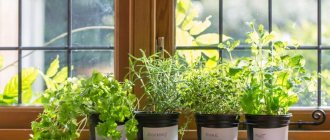Tulips are very beautiful and delicate flowers, the aroma of which envelops you in a blanket of bliss and gives you real spring warmth.
Today, breeders have developed many varieties of them. Among them:
- terry;
- green-flowered;
- Rembrandt tulips;
- Kaufman tulips;
- parrots;
- and many others.
It's interesting to know
We associate tulips with a country like Holland. But the flower itself comes from Asia. Its name is consonant with the word “turban”, which means headdress (it is true, a tulip bud really resembles a turban).
Holland is the leader in the number of tulips produced per year. There are many festivals dedicated to this flower.
The flowers grow from bulbs and belong to the lily family. Under natural conditions, tulips grow in early to late May. But you want to see such beauties all year round, especially on March 8th. That is why people who want to have spring flowers in their winter garden are interested in whether it is possible to grow tulips at home?
Variety selection
Not all varieties are suitable for forcing in water, so when purchasing bulbs, look for the corresponding designation on the packaging. Tulips from the Darwin hybrids and Triumph groups are usually suitable:
- Maureen;
- Forgotten;
- Dream;
- Parade;
- Record.
For the middle forcing period (February-March) the following varieties are used:
- Diplomat;
- Oxford;
- Vivex;
- Kis Nelis;
- Eric Hofsier;
- London.
Choose only healthy and large seed material.
What conditions are needed for growing?
The peculiarity of the bulbs is that they are not capable of physiological inactivity.
This means that they require constant air exchange and a certain humidity. Until sowing, they are stored in a dry, well-ventilated area at a temperature of +20°C and a humidity of 60–70%. During this period, a flower primordium is formed in the bulb. In mid-October, the air temperature should be reduced to +17°C. From this moment you need to begin pre-planting autumn preparations. It consists of treating the bulbs with cold. By the time such influence begins, the future plant should be fully formed in it.
The cooling process is called distillation. For early flowering varieties it should be 16 weeks. To begin with, the bulbs are placed in the soil.
The composition of the mixture may vary:
- clean river sand;
- combination of sand and peat;
- only peat;
- sand with garden soil.
Did you know? Tulips grow even after they are cut and placed in a vase. The bouquet may well grow by about 5 cm while it remains indoors.
Some gardeners advise using 2 parts garden soil, 1 part compost and 1 part clean sand. Add 50 g of ash to the mixture. Stir. Fill the pot 2/3 full, plant the bulbs and add soil. After planting, water with a pale solution of potassium permanganate. Then the containers are transferred to a cool place with a temperature from 0°C to +10°C. This phase will take about 4 weeks. After which the air temperature near the containers is lowered to -2°C and covered with film to avoid excess moisture loss.
As soon as the roots grow, the tulips are returned to a warm room. For the first few days, the lighting should be dim and the temperature should be around +12°C. Plants can even be shaded to prevent them from stretching out. Lighting and temperature are gradually increased. The seedlings will need to be watered regularly and provided with a suitable microclimate for growth.
Selection of capacity
The best pot is considered to be a dish-shaped container. It looks very decorative. But bulbs also grow well in pots. Any portable container should have a drainage hole to ensure good air circulation for the bulb. Sometimes tulips are planted in baskets. This is also convenient in its own way.
Soil composition
Neutral or alkaline soil is ideal for tulips. They prefer soil rich in organic compounds. Adding organic matter is necessary to clay or sandy soils, as they are poor in nutrients. You can find one at your local garden center or make your own.
The following combination is suitable for indoor tulips:
- sphagnum moss at the bottom of the pot;
- rich fertile soil from about the middle to the end of the pot.
Well-drained soil can carry a large volume of water. Poor quality soil does not allow water to pass through well, which means it does not ensure proper growth and cultivation of the plant.
Did you know? Most tulips produce one bud on one stem. But several varieties can have up to four of them on one stem.
Temperature, humidity and lighting
The temperature regime depends on the stage of development of the bulb. So, after collection or purchase and until forcing, the temperature should be maintained at +20°C and humidity 60–70%. Then it is reduced to +17°C, the bulbs are planted in containers and taken to forcing at temperatures from 0°C to +9°C. After distillation, the temperature regime is gradually restored to +20°C. And they maintain it until cutting or the end of the growing season.
Tulip growing technology
Now you can move on to the most important stage of work - growing flowers. It can be divided into three stages:
- disembarkation;
- watering, lighting and fertilizing for growth;
- collection of bulbs and their subsequent canning.
Let's take a closer look at how to plant tulips on the balcony without making mistakes at any of the indicated stages.
Planting bulbs
Scheme for planting selected bulbs in the ground:
- Fill the working pots or boxes with substrate to 2/3 of the height. Pour it with a 10% solution of potassium permanganate.
- Prepare groups of bulbs for each container. Peel them from excess husks, place them on the ground at a distance of 1-2 cm from each other and gently press them down 1 cm.
The bulbs must first be slightly deepened and only then finally covered with soil.
- Add soil to the top of the container - the soil should completely cover the planting material.
- Water the substrate with water. If it sag, add more soil.
The planted bulbs should be left on a glassed-in balcony for cooling for 13-16 weeks. The air temperature should be at least +3-4°C and not higher than +6°C. Bulbs cannot be frozen; open balconies are not suitable for cooling. Containers with planting material must be covered with newspapers or dark cloth.
Feeding, watering and lighting
During the cooling period, tulips are watered as the soil dries out. 13-16 weeks after planting, the pots and boxes are moved to a warmer place or the balcony is heated - the temperature should not be lower than 12°C. At this stage, the rooting period of plants begins
For the next 6 weeks, you need to maintain constant soil moisture - this is important for the appearance of the first shoots. Dark cloth and newspapers can be removed
Upon completion of the rooting stage, the sprouts should reach a height of about 5-7 cm. Now on the balcony you need to ensure a temperature of at least 21°C. At this stage, the plants are fertilized - add 100 g of organic fertilizer and 20 g of urea and ammonium nitrate to the soil. You can also use 1.5% calcium nitrate for recharge.
The first shoots are proof that rooting was successful
The next stage is active growth. At this stage, plants require good lighting. If there is little natural light, install a 40-60 W fluorescent lamp on the balcony: place it at a height of 30 cm from the top of the sprouts and raise it as the tulips develop. Sprouts need to be illuminated for at least 12 hours a day.
When the sprouts become stronger, the tulips need to be provided with high-quality lighting.
When the sprouts turn into strong stems and acquire the first buds, begin to gradually reduce the temperature on the balcony. Spray the leaves twice a day without touching the buds. Artificial cooling and humidification will prolong the flowering of plants.
The reward for the work done is blooming tulips
Care after flowering
After flowering has completed, the bulbs should be left in a pot or box on the balcony for another 4 weeks, continuing daily watering - this will allow them to fill with moisture and ripen to their maximum size before conservation. After a month, when the leaves of the plant become dry, carefully dig up the bulbs, remove their old peel and dry: a month at a temperature of 23°C, another month at 17°C, subsequent months at 14°C.
Next fall, it will not be possible to plant tulips on the balcony using this seed material - the plants will germinate, but will not bloom. Therefore, it is better to let the bulbs rest for at least a year, and then repeat the entire procedure again. An alternative option is to plant plants in natural conditions in the garden.
Greenhouse requirements
To successfully “drive out” tulips by spring, you need to use above-ground greenhouses. This is usually a greenhouse made of polycarbonate.
The requirements for a structure made from this material are the simplest: it must accommodate the planned number of tulips, optimally transmit sunlight, be able to connect artificial light, and also allow you to control and change the temperature.
A considerable number of specialized companies are engaged in the production of suitable warm “houses” for tulips, so there should be no problems with purchasing a suitable greenhouse.
We grow tulips at home in winter. How to do it?
You can grow such a bouquet by a certain date. For example, by March 8th, when flowers are especially popular among us. I also think it will be nice to receive live tulips for other winter holidays. The process of growing such a bouquet can be easily regulated. You can speed it up, or you can slow down the pace of cultivation a little. Everything here is regulated quite simply.
How to plant tulip bulbs?
We will plant tulips in a pot. Any will do. The size of the pot is up to you to determine. It all depends on what size “living” flower bed you want to end up with. You can use any soil to fill the pot. When you fill the pot with soil, you can plant tulip bulbs there. They do this very tightly, that is, they press the bulbs almost end to end. You can even plant them in two tiers, again still close to each other.
If you take a small pot, then you can plant about 20 bulbs in it. After planting is completed, the bulbs are watered, and the pot itself is then placed in a plastic bag. Next, right in this bag, the pot will need to be placed in the refrigerator. Find a place for it on the bottom shelf. You shouldn't forget about him. Remove the bag from the pot periodically, do not let the soil become moldy. But you also don’t need to let it dry out. Timely watering is also very important here.
How to grow?
After spending a couple of months in the refrigerator, the tulip bulbs will take root well, and you will see the first shoots, which by that time will appear from the ground. Now, it’s time to take the pot out of the refrigerator and put our tulips out for “forcing.” In the warmth, the sprouts will quickly grow. This growth will not occur due to active photosynthesis or any additional nutrition, but due to the nutrients that are present in the bulbs themselves. That is why this process was called “forcing”.
How quickly your tulips will grow is up to you to decide. This can be adjusted very simply. If we take the average, it’s about 2 or 2.5 weeks. During this time, on average, a good bouquet grows. But, if you need to speed up this process, for example, by a certain date, then you need to place the pot of tulips in a warmer place from the window. There they will bloom much faster. And when timing doesn’t matter, then let the pot stand in a cooler place. Then the tulips will bloom much later. Here you should know that flowers that developed more slowly will be stronger than those whose growth you accelerated. Accordingly, such tulips will also last longer in a vase.
When the holiday comes, you can cut the tulips and give them to the person for whom you grew these flowers. Let this person appreciate your efforts and enjoy the winter tulips. But, you can give flowers directly in a pot, that is, without cutting them. Just like tulips, you can grow other small-bulb flowers at home. For example, crocuses, and besides them Pushkinia or Scylla. These flowers, after being in the refrigerator, bloom even faster. Even in less than 7 days. This way you get a bright, vibrant flower garden at home that will grow right before your eyes.
This video will also help you grow tulips in winter at home. Here you will also be shown several ways to do this. Let's see.
Preparatory activities
I recommend preparing planting material according to the following instructions:
- Calibration Planting material is sorted and sorted by size.
- Temperature changes. The bulbs are first kept at +30 °C, then the temperature is reduced to +9 °C.
- Cleaning. First of all, the onions are cleaned of surface husks, then you need to check for the presence of mold.
- Disinfection. The bulbs are soaked in a weak solution of potassium permanganate.
Containers and soil
Pots should be ceramic, not deep, with drainage holes.
Soil options:
- Hydrogel. The root system receives the optimal amount of moisture in this substance.
- Sand. The liquid in the substrate evaporates quickly; there is no stagnation of moisture in it. It is necessary to carry out fertilizing.
- Soil mixture. To prepare the soil, sand, peat and garden soil are used in equal quantities.
Proper care after planting
Actions of the gardener after the end of forcing:
- Return the pot to a room with a temperature no higher than +10°C. On the first day, install dim lighting and illuminate the pot for about 3 hours a day. The rest of the time, cover the bulbs with a dark paper cap.
- At night, the temperature near the boxes should drop. This is necessary for good development of the root system.
- Then, every 2 days, increase the temperature and increase the duration of lighting.
- After the tulips have sprouted, they need to be watered regularly - daily or every other day. In this case, the soil needs to be moistened, but not filled with water.
- For a full development cycle (to flower) it will take 12–17 weeks, depending on the variety.
- After the tulips have finished blooming, cut off each flower. The bulbs will have to be disposed of as they will not bloom a second time. Or replant them to grow new plants after the foliage has died back naturally.
Important! New bulbs need more water during the growing period than after the flowering phase has passed.
Watering
Improper watering can jeopardize the development of tulips. Therefore, it is important to know about watering that:
- tulip does not like excess water and needs well-drained soil;
- the bulb may become deformed, and the flower will not be too lush if the soil is allowed to dry out.
Therefore, tulips are watered several times a week. But they do this so that the soil is moist, but not abundantly watered. The frequency of watering is checked based on the condition of the soil . If the top 3 cm are dry, it’s time to water.
Top dressing
To ensure good flowering next year, feed the bulbs every 7-10 days with potassium fertilizer (20 g of potassium fertilizer per 10 liters of water). Start fertilizing as soon as shoots appear. Stop as soon as the foliage begins to die back at the end of the season.
Some sources indicate that in addition to potassium, nitrogenous fertilizers in the form of ammonium nitrate can be applied . It can be added to an aqueous solution of potassium fertilizer in the same volume - 20 g. In stores you can also buy ready-made mixtures that are suitable for tulips - “Floran”, “Garmavit”, “Gerbasol”.
Did you know? If you brought home a bouquet of tulips, change the water in the vase every other day and refresh the cut. This will help them last longer. 1/2 teaspoon of lemon juice dissolved in water will also help to ensure longer flowering.
Disease and pest control
There are not many problems that can be encountered if the bulbs are grown in pots. Potential outdoor pests include slugs and snails. But since there are no insects in the room, there is nothing to worry about.
As for diseases, they are most often the result of improper watering. Excessive moisture can cause the appearance of rot: gray rot, root rot, soft rot, botrytium rot . Onion rot cannot be seen when it appears. And when this happens, it will be too late to fight. As a preventive measure, it is imperative to observe the intensity of watering and pre-treat both the soil and planting material by disinfecting it with a pale pink solution of potassium permanganate. During the budding period, you can spray with a 1% solution of Bordeaux mixture.
Growing tulips is considered a complex variety of floriculture. But if you have a desire to grow these wonderful spring flowers on your windowsill, be sure to try it. Caring for them is not as difficult as it seems.
How to cut flowers
Flowers must be cut before the buds begin to actively open. Cutting should be done in the morning - then the plant contains a sufficient amount of moisture, which is very important for preserving the flower.
You can store cut flowers in 2 ways:
- Dip them in cold water. The tulip retains its beautiful appearance for 5-7 days;
- Along with the onion. The plant is removed from the box and the bulb is not cut off. Next, the extracted flowers are placed in wrapping paper or cardboard boxes and stored in the refrigerator. The optimal storage temperature is about 2-3 degrees Celsius. This is how tulips retain their beauty for up to 40 days.
By the way, many buyers prefer to purchase tulips with a bulb. They cut the bulbs, store them until autumn and plant them in open ground. After a couple of years, the bulbs become strong and delight others with their beautiful flowering.
Plants can be grown in greenhouse conditions not only for sale, but also for breeding purposes. You can get a pure new variety without unplanned cross-pollination.
Growing flowers in greenhouse conditions is a very interesting and profitable process. Delicate and attractive tulips from the greenhouse are worth the time and labor.











